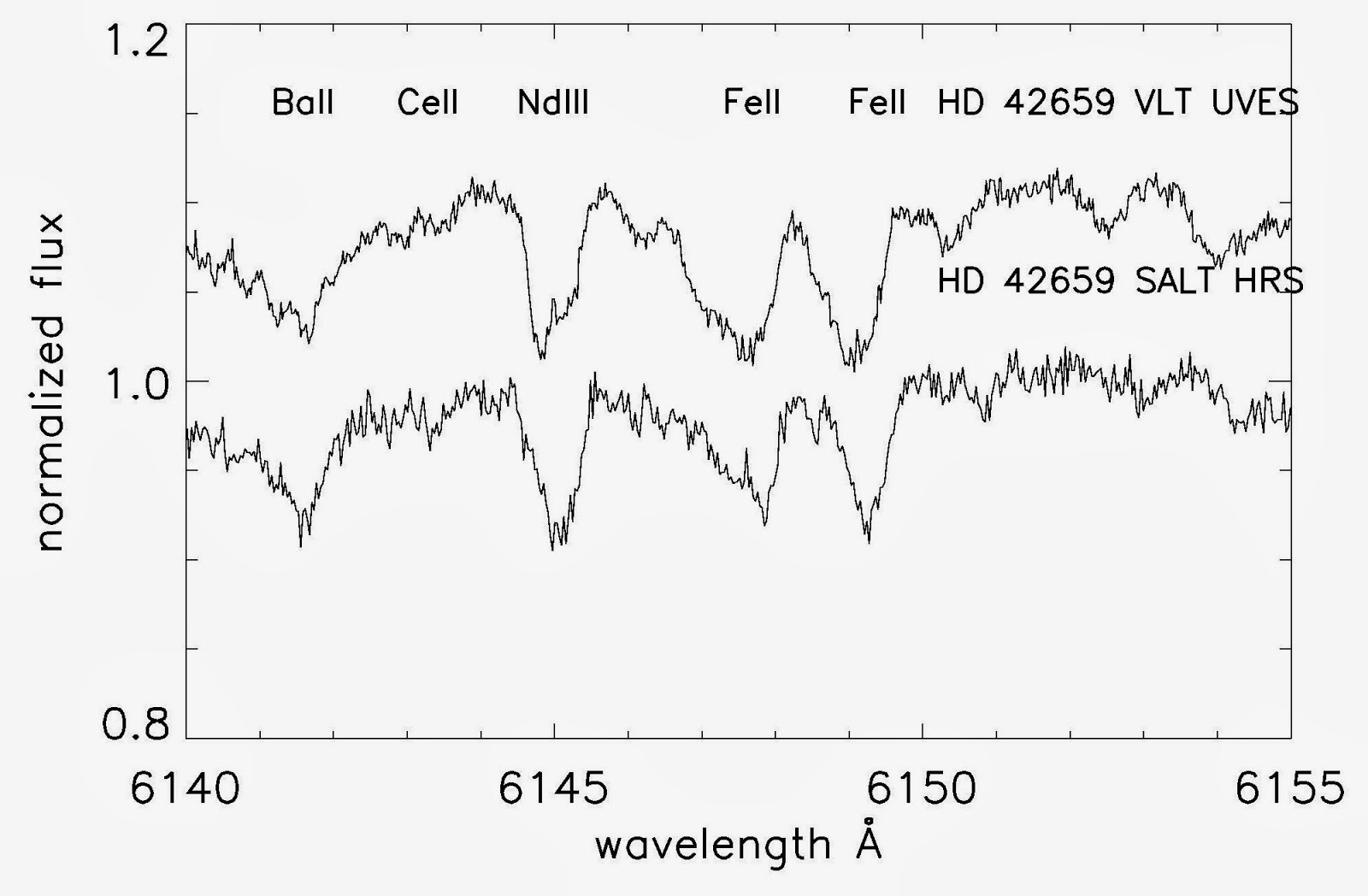This is the first of what we anticipate will be a number of postings on results of the SALT High Resolution Spectrograph (HRS) Science Verification programs. This post comes from edited highlight of Vladimir Elkin's (University of Central Lancashire, UK) report concerning his and Don Kurtz's (UCLAN) program entitled "A search for rapid oscillation in spectroscopically selected chemically peculiar stars".
Three stars were observed with HRS, providing data that were of good quality and suitable for the aim of determining radial velocity variations. In the case of one star, HD42659, Vladimir was able to compare the HRS data with similar observations obtained with UVES on the VLT at ESO in Chile. In the plot below, he shows a 60s exposure spectrum with HRS in High Resolution (R ~ 72,000) mode (HR), compared to a 40s UVES spectrum.
The somewhat lower S/N ratio of the SALT data are a result of the poorer observing conditions for the SALT observation, done on 19 Dec 2013 (3" seeing, some clouds), compared to those for the VLT observations. The observations were conducted by astronomers Lisa Crause and Luke Tyas, with Veronica Van Wyk as the supporting SALT Operator.
Vladimir comments that the HRS and UVES spectra of HD42659 show differences in the line profiles as a result of spotted structures on the star's surface, resulting in spectral variability, and that the HRS data are good and will be used in radial velocity and abundance analyses.
Three stars were observed with HRS, providing data that were of good quality and suitable for the aim of determining radial velocity variations. In the case of one star, HD42659, Vladimir was able to compare the HRS data with similar observations obtained with UVES on the VLT at ESO in Chile. In the plot below, he shows a 60s exposure spectrum with HRS in High Resolution (R ~ 72,000) mode (HR), compared to a 40s UVES spectrum.
The somewhat lower S/N ratio of the SALT data are a result of the poorer observing conditions for the SALT observation, done on 19 Dec 2013 (3" seeing, some clouds), compared to those for the VLT observations. The observations were conducted by astronomers Lisa Crause and Luke Tyas, with Veronica Van Wyk as the supporting SALT Operator.
Vladimir comments that the HRS and UVES spectra of HD42659 show differences in the line profiles as a result of spotted structures on the star's surface, resulting in spectral variability, and that the HRS data are good and will be used in radial velocity and abundance analyses.

No comments:
Post a Comment